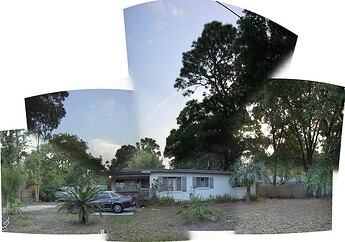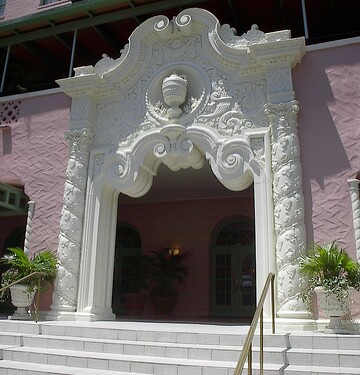Sure the ![]() has a trace function but not one you can take everywhere and it does centerlines.
has a trace function but not one you can take everywhere and it does centerlines.
Huh. This is an interesting concept.
I wonder why there isn’t an option to print out a frame, seems clunky to require a rigid frame. Maybe because paper will flex, and they rely on the frame being a flat plane for precision. Maybe because they can’t guarantee margins and scale on everyone’s printers. Both valid.
I wonder how they’re accounting for lens distortion, if they have an algorithm that is lens independent or if they look at what device the app is installed on and have a dewarper profile for each device?
That’s what they are selling so they won’t offer it but I’d bet you could reverse-engineer it after having one in hand.
the frame is whatever. the real question is how good is the app. they aren’t the only people out there doing image tracing. why is theirs so much better/more accurate than the rest of them?
Good question. For me, past performance factors in a lot. These are the people who brought the Shaper Origin.
i mean, Adobe has a pretty good rep for this kind of thing, and it’s right in their wheelhouse. and their trace is only so good. i’m not sure coming from shaper makes me feel any more positive about their ability to make it work more than adobe’s.
now, maybe eventually they’ll find a way to enable adobe sensei (their AI back end) to do it better?
I have been using Gimp, even when the image is out of perspective I have straightened it out.
The frame is the key. The dots around the edge are the key to the software’s ability to de-warp the image. They’re the same thing used by the software on the router using the dotted tape to fiqure out where it is as you move it around the workpiece.
They know what the dots on the frame should look like if the photo was oriented straight and flat. The software “just” ![]() needs to make similar corrections to what it sees from the image within the frame.
needs to make similar corrections to what it sees from the image within the frame.
the frame is the key to being able to use a phone, which you may or may not hold perfectly on the same plane as the object you’re photographing. but if i scan something on a scanner, it’s going to be 100% flat (unless the user is an idiot). the dots on the frame are probably the key to getting the physical size exact, which could be very useful and important, depending on what you’re making.
but in the end, if the software can’t convert the bitmap to an accurate vector, does it matter if the frame helped figure distortion in the phone or got you an accurate scale?
the conversion is the hardest part. if it wasn’t, then the vector design software companies would have nailed it years ago.
Precisely.
Years ago they had a phone app that could take a series of real-world images and convert to very nice 3D-models, I captured and printed some extraordinarily complex objects, mostly sculptures from public spaces.
Why they couldn’t apply the same concept to producing 2D art confuses me, considering how ineffective most trace functions are (even in their own product, at least, last time I used it…)
If anyone wants to search for this it’s called photogrammetry. I recently saw a tech demo that did the same with video. Pretty wild.
I’ve tried both Canvas lite and Polycam on my iPhone, both are pretty cool, but that was a while ago now. Searching the App Store shows a lot more options now, and a quick google says that Kiri is a good one to try too. Maybe something for later today. ![]()
I’ve looked at current options and yet to find one that didn’t have some kind of heavy restrictions. I have Scandy pro but it is useless. I have the latest iPhone with lidar but Scandy only uses the front camera for its IR sensor. Wish I could remember the name of the Adobe one I had but it’s been years and was discontinued. I know people with 3D model desktop scanners and just wonder - how hard could it be?
Yeah many of them are pricey. Kiri seems to have a 3 scans per week limit on the free tier, which seemed reasonable for my purposes.
Pretty sure I tried Kiri and the lidar only worked if you paid. That may have changed, or I may just not remember.
Last I checked, LiDAR scanning was pretty meh compared to photogrammetry, unless you are working at room scale. Has that improved?
I’ll have to try Kiri.
A similar 2d thing I have not seen available is just photo stitching. That several photos can be adjusted to make one continuous photo using the overlap.
This was my old house in ~2003 and you can see what it did.
This was what I was looking for. There was so much stuff up close that this photo could not actually be taken…
I have several iOS apps installed that create composite images by stitching multiple frames. A quick search of the Apple App Store for “panorama,” “photo stitcher” or “panorama and photo stitcher” turns up quite a few. Despite the names, most of them will do “partial” panoramas.
I have used DMD Panorama and, it works okay:
Are you talking about something more specific?
The quality is not up to what you can get using a dSLR on a tripod with a panoramic head and stitching software like PTGUI. So, I don’t create a lot of phone composites.
Unless you constrain the camera movement quite a bit, it gets tricky for a computer (or phone) to detect matching points to correctly distort the individual frames to match them up. Maybe that’s a job for some sort of ML system.
That particular app was an add on to a girlfriend’s android phone. I was able to clone it once with her help but when that phone died she was long gone. It was the only app I have seen where as long as there was some overlap it would stitch the photos together distorting each image so all were the same look.
As you can see at the entrance that is six images that one cannot determine the area of each image. I would like to be able to do that routinely with random photos not necessarily shot at one time, as was the case with the house so you can see the edges but still a good job.
I did that manually after a vacation to Montana, since those skylines were just too big to capture in a single image ![]() I always said I was going to print them all out and hang them on a wall, but never got around to that part!
I always said I was going to print them all out and hang them on a wall, but never got around to that part!
I had the same experience taking photos while traveling through Montana on a train several years ago. They don’t call it Big Sky Country for nuthin’. ![]()



